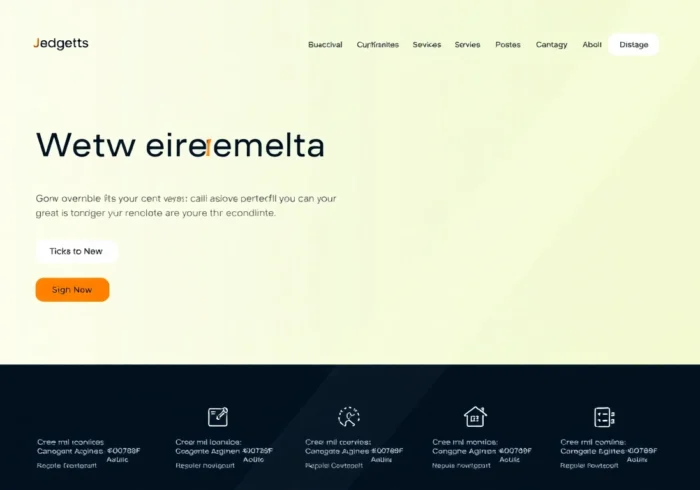Understanding Blockchain Fundamentals and Its Impact
What Is Blockchain Technology and How Does It Work?
Blockchain technology is a revolutionary form of digital ledger that enables secure, transparent, and decentralized recording of transactions. At its core, a blockchain is a distributed database composed of a sequential chain of blocks containing transaction data. Each block is cryptographically linked to its predecessor, creating an immutable record that is nearly impossible to alter retroactively. This structure relies on consensus mechanisms such as Proof of Work (PoW) or Proof of Stake (PoS) to validate transactions across a network of nodes, ensuring that all participants maintain a synchronized copy of the ledger.
For instance, the Bitcoin blockchain employs a PoW system where miners solve complex cryptographic puzzles to validate new blocks. Once verified, these blocks are added to the chain, and the transaction history becomes publicly accessible and verifiable by anyone. This transparency fosters trust among users without the need for a central authority, fundamentally transforming traditional notions of data security and integrity.
To explore the concept further, visit blockchain for insights on how this technology is reshaping financial and industrial sectors worldwide.
Key Features that Make Blockchain Secure and Transparent
- Decentralization: Unlike traditional centralized databases, blockchain distributes the ledger across multiple nodes, reducing single points of failure and censorship risks.
- Cryptography: Advanced cryptographic techniques secure transaction data, ensuring confidentiality and integrity.
- Immutability: Once recorded, data in a blockchain cannot be altered, providing a tamper-proof audit trail.
- Consensus Protocols: Distributed agreement mechanisms confirm transactions, preventing fraud and double-spending.
- Transparency: Public blockchains enable any participant to verify transactions independently, fostering trust and accountability.
These features combine to create a resilient system that is both secure and transparent, making blockchain ideal for applications requiring high trust and integrity, such as financial exchanges, voting systems, and supply chain management.
Decentralization and Its Role in Modern Finance
Decentralization stands at the heart of blockchain’s transformative potential in finance. By removing intermediaries like banks and brokers, blockchain enables peer-to-peer transactions that are faster, cheaper, and more inclusive. This paradigm shift allows for the democratization of financial services, especially in regions with limited banking infrastructure.
Examples include decentralized finance (DeFi) platforms offering lending, borrowing, and trading services without traditional intermediaries. Transactions executed via smart contracts on blockchains like Ethereum can automatically enforce agreements, reducing operational costs and increasing efficiency. Additionally, blockchain fosters innovation in areas like cross-border remittances, microfinance, and asset tokenization.
Major institutions recognize this shift, with several central banks exploring digital currencies grounded in blockchain technology—most notably, the development of Central Bank Digital Currencies (CBDCs). These efforts aim to combine the benefits of decentralization with regulatory oversight, ensuring stability and security within the modern financial ecosystem.
Current Trends and Developments in Blockchain Usage
Institutional Adoption and Tokenized Funds Growth
Institutional interest in blockchain has surged, driven by the promise of increased transparency, security, and efficiency. Notably, tokenized institutional alternative funds (IAFs) have experienced remarkable growth, surging 47% in recent periods. These funds leverage blockchain’s capability to fractionalize traditional assets such as real estate, private equity, and hedge funds, enabling broader participation from retail and institutional investors alike.
Leading financial firms and asset managers—like Amdax, a Dutch firm raising $23.3 million to launch a Bitcoin treasury company—are adopting blockchain for treasury management and investment automation. Tokenization not only enhances liquidity but also streamlines compliance and auditability, reducing costs and operational risks.
Blockchain Applications in Banking and Government
Banks are increasingly integrating blockchain to expedite settlement processes, enhance security, and reduce fraud. For example, several banks across Asia, Europe, and North America have adopted blockchain solutions for cross-border payments, exemplified by Ripple’s network.
Governments are exploring blockchain for transparency and efficiency in public services. The Philippines, for example, is considering a legislative proposal to put the national budget on blockchain, aiming for improved auditability and reduced corruption. Meanwhile, Europe welcomes its first crypto-native neobank, illustrating mainstream acceptance.
Such applications augment trust, improve efficiency, and foster financial inclusion, signaling a significant evolution fueled by blockchain’s capabilities.
Major Companies and Startups Driving Blockchain Innovation
Innovation in blockchain spans startups and established giants, including Meta, which, despite facing regulatory and competitive challenges, invests heavily in integrating blockchain and AI. Companies like Everything Blockchain Inc. are adopting frameworks such as Flare’s XRPFi to optimize corporate treasury yields.
The Ethereum foundation emphasizes interoperability as a top UX goal, catalyzing cross-chain asset movement. Meanwhile, initiatives like Metaplanet contributing to FTSE Japan Index following $11.7 million Bitcoin purchases exemplify institutional confidence. Additionally, South Korea’s Bitplanet is pioneering a Bitcoin treasury strategy with an $80 million combined purchase, indicating robust regional growth.
Challenges and Opportunities for Blockchain Adoption
Regulatory Landscape and Legal Challenges
Regulatory uncertainty remains a significant obstacle. Countries vary widely in their approach—ranging from embracing blockchain innovations to imposing stringent restrictions. Notably, cases like Eliza Labs suing Elon Musk’s xAI for alleged monopolistic practices highlight legal complexities that can affect development and deployment.
To navigate this landscape, organizations must stay informed and actively engage with regulators. Clear policies on taxation, Anti-Money Laundering (AML), and Know Your Customer (KYC) procedures are essential for long-term viability.
Scalability and Performance Solutions
As blockchain adoption grows, scalability remains a critical challenge. Congestion and high transaction fees hinder widespread use, prompting innovation through Layer 2 solutions. OKX’s recent launch of a $100 million fund to support dApp developers on its Layer 2 chain exemplifies efforts to scale operations efficiently.
Technologies like sharding, rollups, and sidechains are being deployed to improve throughput and reduce costs. Ethereum’s focus on interoperability and performance improvements indicates a concerted push toward user-friendly blockchain ecosystems.
Future Opportunities in Web3 and Digital Asset Integration
The future of blockchain lies in seamless Web3 integration, enabling decentralized applications (dApps), NFTs, and smart assets to become commonplace. Initiatives like Filecoin’s partnership with Theoriq to develop AI-powered Web3 agents demonstrate a convergence of blockchain, AI, and data analytics.
Additionally, the rise of on-chain capital markets and the development of crypto insurance markets—projected to be a $100 billion blind spot—present lucrative avenues for investment and innovation.
Implementing Blockchain Strategies for Business
Steps to Integrate Blockchain into Your Organization
- Define clear objectives: Identify problems blockchain can solve, such as transparency, security, or efficiency improvements.
- Assess technical requirements: Choose suitable blockchain technology (public, private, or hybrid), and evaluate scalability and interoperability needs.
- Develop a proof of concept: Pilot projects help validate feasibility and ROI.
- Engage stakeholders and regulators: Ensure compliance and foster collaboration across teams.
- Implement gradually: Roll out scalable solutions, monitor performance, and iteratively improve.
Best Practices for Managing Blockchain Projects
- Prioritize security at every stage, including smart contract auditing.
- Adopt agile methodologies for flexibility and responsiveness.
- Build interdisciplinary teams combining blockchain expertise with legal, compliance, and business acumen.
- Maintain transparency with stakeholders about project goals and progress.
Measuring Success and Performance Metrics
KPIs such as transaction throughput, latency, security breach incidents, and user adoption rates help evaluate blockchain project success. Additionally, monitoring compliance adherence and operational cost reductions can provide a comprehensive view.
The Future Outlook of Blockchain in Global Economies
Predicted Trends for 2025 and Beyond
By 2025, blockchain is expected to be deeply embedded in global financial architectures, with widespread adoption of CBDCs and tokenized assets. Cross-chain interoperability standards will mature, enabling seamless asset movement across multiple networks. The rise of decentralized autonomous organizations (DAOs) will further democratize governance and funding.
Impact on Traditional Financial Systems and Markets
Blockchain’s integration will challenge conventional intermediaries, leading to faster settlement times, reduced costs, and enhanced transparency. Traditional markets will incorporate blockchain-based securities, and data from decentralized networks will influence mainstream financial decision-making. The emergence of on-chain metrics as reliable indicators could reshape risk assessment models.
How to Stay Ahead in the Blockchain Ecosystem
Staying informed requires continuous education, active participation in industry forums, and collaborations with innovative firms. Monitoring regulatory developments, technological advances, and market signals ensures organizations remain agile and prepared to leverage emerging opportunities.



